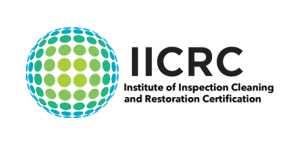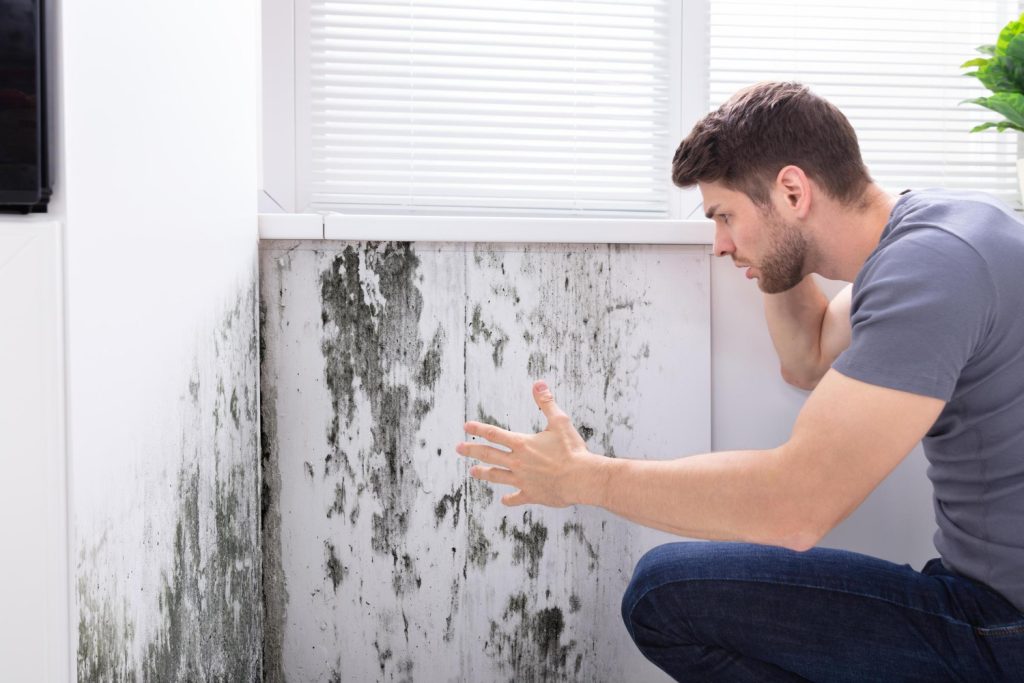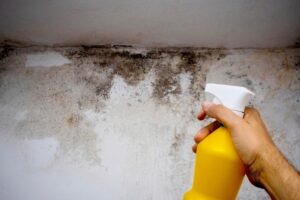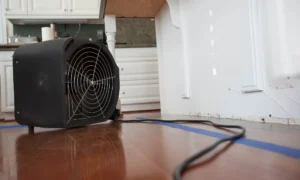Mold is a pesky problem that can take hold in your home after water damage. Without prompt attention, it can quickly spread, affecting your health and the safety of your living space. Stopping mold before it spreads is crucial for maintaining a healthy environment.
Water damage often creates the perfect conditions for mold to grow. Moisture trapped in walls, floors, or ceilings can lead to mold colonies that multiply fast. Recognizing the early signs and understanding the causes of mold growth can help mitigate this issue before it becomes severe.
Tackling mold issues requires swift action and preventive strategies. By knowing what to look for and how to respond, you can keep mold at bay and protect your home. Understanding these measures can help you maintain a mold-free environment, ensuring your home remains a safe and pleasant place to live.
Recognizing Early Signs of Mold Growth
Spotting mold early can prevent major issues in your home. Mold often starts in unseen areas that retain moisture. Bathrooms, basements, and kitchens are common hotspots, particularly around sinks, bathtubs, and windows where dampness is frequent. Keeping an eye on these areas helps catch mold before it spreads extensively.
Mold can show up as dark spots or patches on walls, ceilings, and floors. However, it isn’t always visible. A musty smell is a strong indicator of mold even if you can’t see it. This odor usually signals mold hiding beneath surfaces, inside walls, or under carpets. If you notice persistent smells like these, it’s worth investigating further.
Mold exposure can lead to health symptoms in sensitive individuals. Watch for signs like sneezing, coughing, or itchy skin. Some people might experience more severe reactions such as wheezing or difficulty breathing, especially if they have allergies or asthma. Recognizing these symptoms early can help prompt a search for mold, leading to timely action to remove it.
By understanding these early signs, you can take control and stop mold before it threatens your health or home stability. Regular checks and prompt responses are key to managing mold effectively.
Understanding the Causes of Mold from Water Damage
Mold thrives in moist environments, making water damage a prime catalyst for its growth. When water leaks or spills go unchecked, they create wet conditions that mold loves. Even small amounts of moisture can lead to substantial mold problems if not addressed quickly. It’s essential to know how moisture acts as a breeding ground, enabling mold to flourish in a short time.
Specific water-related issues contribute significantly to mold development. Leaky roofs, burst pipes, and flooded basements are common culprits. Each of these issues can rapidly increase humidity levels in the home, leading to ideal conditions for mold to take root and grow. Areas that stay damp for over 24 hours become high-risk zones for mold invasion.
Humidity and ventilation play critical roles in mold growth. When humidity levels inside the home stay high, condensation can form on walls and windows, providing the moisture mold needs. Proper ventilation helps keep indoor areas dry, reducing humidity and lessening the chances of mold establishing itself.
By understanding these causes, homeowners can better manage their spaces and prevent mold from taking over after water-related incidents. Controlling moisture and ensuring adequate ventilation are crucial steps in keeping mold at bay. With these insights, you can take proactive measures to prevent mold from becoming a recurring issue.
Immediate Actions to Prevent Mold Spread
When you spot water damage, acting fast is crucial to stopping mold in its tracks. The first step is to identify and repair the source of water. Whether it’s a leaking pipe or a roof problem, fix it to prevent further damage. Once fixed, you can focus on drying the affected area.
Effective drying techniques are essential to prevent mold growth. Using fans and dehumidifiers helps remove moisture from the air and surfaces. Open windows to increase airflow if weather permits. For severe cases, wet vacuums and moisture-absorbing products like silica gel can accelerate dry times. It’s important to ensure complete drying within 24 to 48 hours to avoid mold development.
Isolating affected areas also helps contain mold. Close doors and seal off rooms with plastic sheeting to limit airflow from contaminated zones to clean areas. Use protective gear like masks and gloves when handling moldy materials to prevent spreading spores.
By taking these immediate actions, you can effectively limit mold spread from water damage, protecting your home from more extensive issues.
Long-Term Strategies for Mold Prevention
To keep mold at bay, implementing long-term strategies is vital. Regular maintenance and inspections should be part of your home care routine. Check roofs, pipes, and basements for leaks or damp spots and act quickly on repairs. Consistent inspections are key to identifying water issues before they lead to mold.
Installing moisture control systems, such as exhaust fans in bathrooms and kitchens, aids in reducing humidity levels. Consider a dehumidifier for wetter climates to maintain a balanced indoor environment. Proper ventilation in crawl spaces and attics also deters moisture buildup.
Professional mold assessments and remediation efforts offer additional peace of mind. Experienced professionals can check for hidden mold, recommend fixes, and execute thorough cleanups. These services ensure your home remains free from threats that compromise air quality and structural integrity.
By adopting these long-term prevention strategies, homeowners can efficiently manage mold risks, securing their homes from the inside out.
Conclusion
Mold from water damage is more than a nuisance; it’s a potential health hazard and a threat to your home’s foundation. Understanding the early signs, knowing the causes, and reacting swiftly to water damage are critical steps in controlling mold. Establishing proactive routines, like regular inspections and moisture management, can help in the ongoing battle against mold.
Ready to tackle mold problems with confidence? Northwest Restoration is here to assist you in identifying, managing, and preventing mold in your home. Our expert team offers comprehensive mold remediation services, ensuring your home remains a safe and healthy environment. Contact Northwest Restoration today to keep mold from taking hold in your home.








